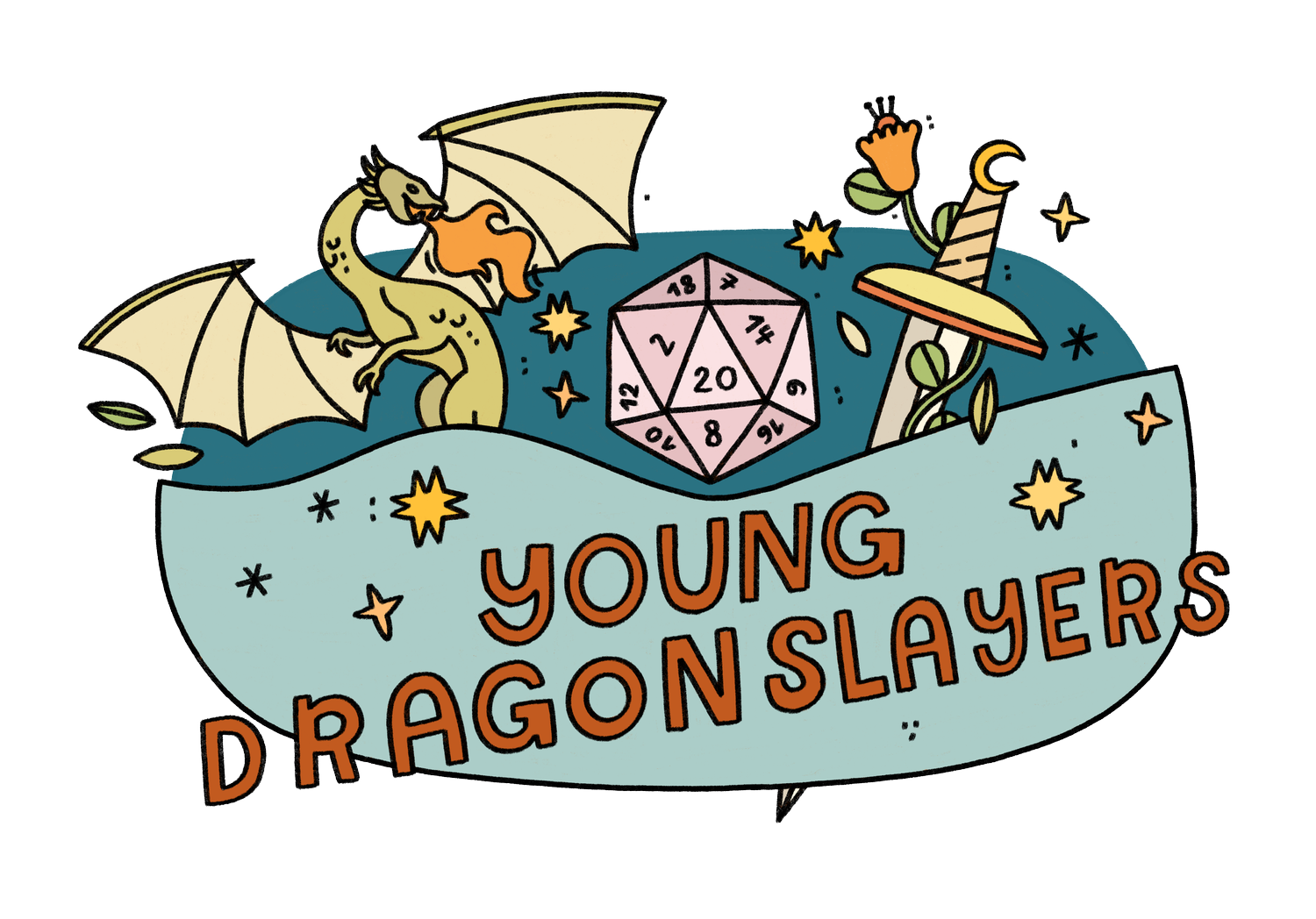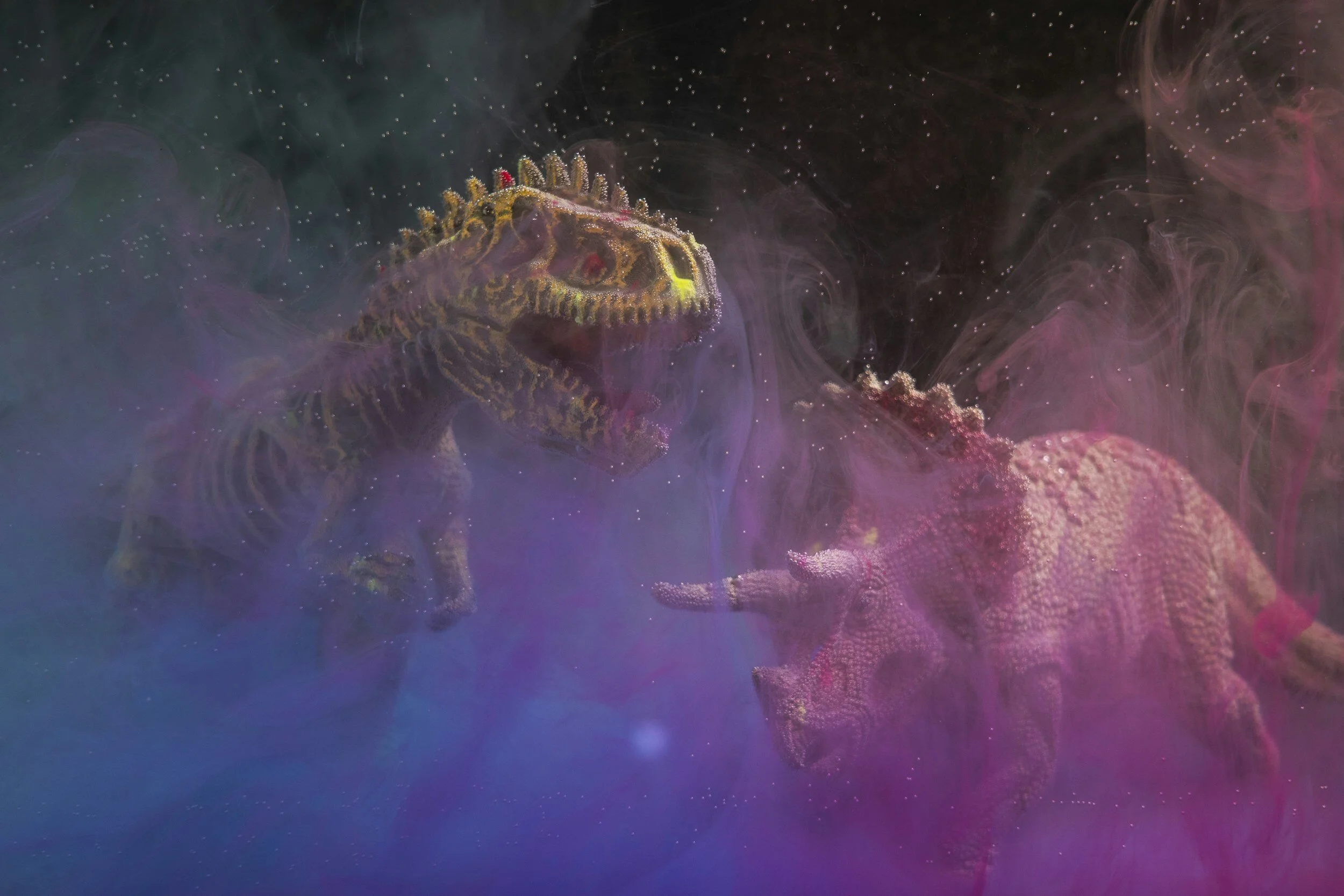How to Reskin Monsters in D&D
You may have heard about “reskinning” in video games, whether that’s turning your Fortnite character into Harley Quinn or making your MOBA champion wear an anime costume. But in games like Dungeons & Dragons, where the visuals are only limited to the realms of your imagination, it costs nothing at all to simply give a dragon a top hat or turn an owlbear into a giant talking raccoon. Since there’s no coding required, it’s also entirely possible for that dragon to create tornadoes of fire or the raccoon to control minds. When starting to make these kinds of changes, though, you have to be careful: you don’t want to accidentally kill your players with a superpowered werewolf wizard or create a nonsensical enemy, like a giant with low strength. Luckily, there are some tried-and-true methods for D&D reskinning that avoid mistakes like this while still keeping your awesome ideas in the game.
Pick a Base Monster to Reskin using Challenge Ratings
In many video games, you play as a character who gradually levels up, gaining better abilities and facing more and more powerful enemies. Returning to earlier areas of the game is a piece of cake, while the next section always manages to be a challenge. That’s because the developers have properly balanced the video game to make sure the enemies are just powerful enough. The developers of D&D did the exact same thing. They created something called a “Challenge Rating,” a number between 0 and 30 that tells you how powerful that monster is compared to your party. You can look to the Dungeon Master’s Guide or one of many online calculators to determine an appropriate Challenge Rating (CR) for your specific party.
Let’s say you’re the Dungeon Master (DM) for a party of five players who all have level-3 characters. According to the math, a “hard” combat encounter for that group would involve a single monster with a CR of 5. For the sake of this example, let’s make a monster inspired by the Demon Slayer anime’s Hand Demon, a durable humanoid enemy that can quickly grow extra limbs to use as both weapons and shields. To pick a monster to use as the base, we’d look at a list of D&D monsters with a CR of 5 and think about which of them might fit a Hand Demon. There are several good contenders, but let’s go with the Otyugh: a large creature with many powerful tentacles that could be reskinned as the extra arms or legs of the Hand Demon.
Understand and Alter Your Monster’s Abilities
Unless you have a strong grasp on the rules, it’s best to leave the core stats (Strength, Dexterity, Constitution, Intelligence, Wisdom, and Charisma) the way they are. Each of these are already balanced for you, and changing them can lead to some unforeseen consequences! In our case, the Otyugh is a large creature with high Strength and Constitution. That fits our strong and durable Hand Demon. The Otyugh also has telepathic powers and a poisonous bite, which are very cool, but not accurate for our Hand Demon.
Getting rid of the monster’s bite also means dropping its multiattack ability (which grants the monster one bite attack and two tentacle attacks each turn). This change brings the monster closer to our vision, but it also makes it weaker. But we can make up for these weaknesses by adding other abilities back in! Part of the difficulty of the Hand Demon comes from its durability and ability to regenerate itself, which we can reflect on our monster. The Red Slaad, another monster with a CR of 5, has the ability “Regeneration.” This ability gives it hit points back at the start of its turn and Magic Resistance, (advantage against magic-based saving throws), two abilities that fit our new monster quite well. This switching out of abilities keeps the monster at a reasonable difficulty while making it feel more like what we had envisionsed.
Use Epic Descriptions to Bring Your Reskinned Monster To Life
Now you have all of the components of your monster and are ready to use it in battle! This is where you can share your idea with your D&D party and your build gets to shine. To create a memorable combat encounter, think strategically from the monster’s perspective to give your players a challenge. Consider what your player characters might know about this monster, or better yet, give the players themselves a chance to learn. (If you want to put in a little extra flavor, create a custom name for your monster. Googling other words for “hand” and “demon” results in “metacarpus” and “succubus,” so you could combine them to name your monster the Metaccubus).
Here’s an example of what introducing our monster might look like:
Looming in front of you is a large pale creature. It has opal eyes, a terrifying smile, and rests on a pile of its own limbs, too many to count. Before we roll for initiative, does anybody want to make an Arcana or History check to see if they recognize this creature? …. On an 18, Salvius, you recall reading about a monster called the Metaccubus. Based on your reading, you know this creature has the uncanny ability to grow limbs upon limbs, using them both as weapons and as a shield against those who would try to attack it.
As the battle plays out, channel your excitement about the monster into your descriptions and use all of its abilities strategically to challenge your players.
Regenerate (regain 10 hit points): At the beginning of the Metaccubus’ turn, you see some of its slashed limbs flop to the ground and new limbs regenerate in their place.
Magic Resistance (roll a DEX save with advantage against a fireball spell): Your fireball reigns down on this monstrosity, but its pale, lifeless eyes turn toward the sky. Almost too quickly to see, the Metaccubus grows eight legs and scuttles unnaturally out of the way of the fireball.
Tentacle (attack and grapple a PC): One of the Metaccubus’ arms grows longer and longer, snaking toward Andretta, smashing her ribs for 7 bludgeoning damage and wrapping its fingernails into her flesh for 4 piercing damage. The giant hand grabs onto her, and she is restrained in its grasp!
Tentacle Slam (smash two grappled PCs into each other): The Metaccubus’ smile somehow grows even wider. With Salvius in one giant hand and Andretta in the other, the Metaccubus brings its hands together, smashing the two of you into each other. Make a constitution saving throw.
By using dynamic descriptions for your monster, you can help your players picture it in their heads the same way you picture it in yours!
Are You Ready To Play?
Reskinning monsters like this can be a great way to bring cool ideas to life for your players while still keeping combat balanced within the game. You can also reskin your own player characters; if D&D doesn’t have the options you’re looking for, you can always make up your own. One of my players wanted to play a character made out of goo and reskinned a water genasi; another wanted to play a bipedal fox, so they reskinned a tabaxi. If you want to custom-design your own character or fight fun custom-designed monsters, consider joining our games! Myself and the other Dungeon Masters here love making up stories inspired by the things our players love and coming up with new ideas together. If you want to learn more about how to bring your own ideas into D&D, you can also join us for our online course, where you will make and run your very own adventure!





